Have you ever walked into a physical shop and got suggestions from the attendant on what they think would suit your needs best? This is personalization at play.
Personalization in eCommerce isn’t a new concept. You may have explored some approaches yourself.
Despite that it’s not a new concept in the eCommerce industry, many businesses keep failing to personalize their customers’ shopping experience.
One of the reasons is because personalization, for many brands, isn’t a walk in the park. Another reason is that most business brands adopt personalization strategies that don’t work.
Also, there are many eCommerce personalization tools to choose from and each one offers a different level of personalization. Therefore, many businesses may find it tedious to decide which one to use.
In this article, we’ll give you tips and examples to make your eCommerce personalization a success.
Let’s get into it, shall we?
Here are points that we will be covering in this post
- What is Ecommerce personalization?
- Benefits of eCommerce personalization
- Examples of ecommerce personalization
- Tips for personalizing an ecommerce website
- Tools for ecommerce personalization
- Conclusion
What is Ecommerce Personalization?
Did you know that 80% of consumers are more likely to buy from your online store if you offer a personalized shopping experience? That’s how important eCommerce personalization is today.
Ecommerce personalization is simply the act of creating a shopping experience that is tailored to the needs and desires of your customers.
In simpler terms, personalization is offering visitors what they will most likely want, based on their preferences.
For example, if your eCommerce website suggests hooded sweatshirts to a visitor because they bought a pair of sweatpants on their last visit. That is personalization – or product recommendation if you prefer to call it.
Details shortly.
The goal of eCommerce personalization is to treat your customers individually. That way, they will feel valued. This in turn will increase your return on investment.
So, if you want your customers to keep coming back, increase your sales and improve your conversion rate, take eCommerce personalization seriously.
To achieve eCommerce personalization, data collection is key. Data tells you your customers’ needs and preferences. That’s why for effective eCommerce personalization, zaius.com says you need to collect the following data:
- Demographics such as age and location.
- Products and product categories customers have browsed on your site.
- Browse or cart abandonment.
- Channels, devices, and platforms customers use to interact with your brand.
- Preferred method/channel of communication and interactions.
- Content consumed across all channels.
- Overall purchase history.
- Any patterns in their behavior, such as a specific brand affinity or regular purchases at a particular time of the year.
Next, let’s explore what you stand to gain by adopting personalization strategies for your eCommerce brand.
Benefits of Ecommerce Personalization
Before eCommerce, people walked into stores and had friendly attendants cater to their shopping needs. It turns out that customers expect this kind of experience from digital stores too.
It does take some effort to transfer this experience from physical stores to online ones, no doubt. But it’s well worth it. Read on to learn why and how it can be the game-changer for your eCommerce brand.
1. Great Customer Experience
One of the many advantages of personalizing your eCommerce website is that it improves customer experience. Your customers are likely not going to come back if they feel that the content on your website isn’t relevant to what they want. To improve customer experience, you should use the best front-end web development technologies in your eCommerce website, Like angular web development, react js web development services, etc
If you display just the right content for each customer’s needs instead, they’ll hang around a bit more, buy a product and return next time.
eCommerce personalization goes a bit further than just improving customer experience. It puts the customer in charge of their experience. You’d also save them the trouble of seeing annoying ads.
This is a major appeal because people have a natural desire to be in charge. Give them this with eCommerce personalization and watch your visitors convert easier and faster. For ecommerce owners, investing in a cost-effective cheap wildcard SSL certificate is highly recommended. Deploying this single certificate affords premium encryption to an unlimited number of first-level subdomains such as payments, blog, product pages, etc., under the main domain at cheap prices! So, buy one now, and watch your CX soar!
2. Improved Customer Engagement
When your customers can relate to the content of your eCommerce website, they’ll stay longer and buy your products. With eCommerce personalization, your customers will find your website engaging. An engaging eCommerce website means longer browsing time which equals more sales and more money in your pocket.
For eCommerce personalization, you’ll have to collect information that helps you learn your customers’ pain points. Armed with this information, you can structure your website in a way that is completely relevant to your customers. This will in turn lead to more sales for you.
According to Accenture, 75% of consumers are more likely to buy from a retailer that not only recognizes them by name but also recommends options based on past purchases, or knows their purchase history. It’s like having a shop designed just for you. How good does that sound?
Ecommerce personalization allows you to do this and build a relationship with your customers. It increases their affinity for your business because you’d be saving them precious time searching through your website for what they want. Who wouldn’t like that?
3. Increase in Average Order Value
Average Order Value is the average amount a customer spends when they place an order in an online store. The Average Order Value or AOV is an important metric in measuring the performance of your online store.
With tailored product suggestions on your eCommerce website for your customers, they are likely to stay on your website longer. This also leads to a higher chance of selling.
Precise product recommendations also lead to more purchases per visit. Amazon is a good example of an eCommerce website that maximizes product recommendation. If you search for an Acer laptop, for example, you’ll also get other recommendations below the product like this.
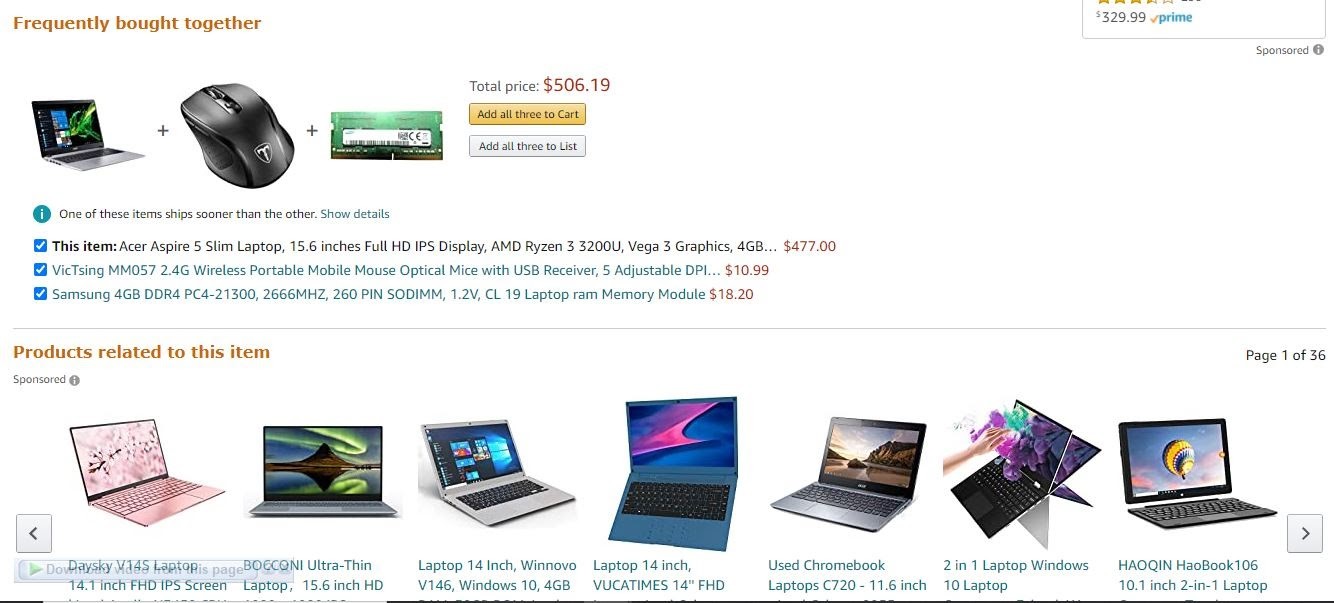
4. Differentiation from Competition
A personalized shopping experience is an easy way to differentiate your brand from the competition.
When you personalize your visitors’ experience, you would put yourself miles ahead of your competitors. Most don’t even know what personalization is, let alone bother about implementing it.
By doing so, you’d steal their traffic and make a remarkable amount of sales.
5. Improved Customer Loyalty
Customers feel special when a business pays attention to their needs and goes out of its way to serve them accordingly. They’ll in turn make such business their go-to for their related needs.
Personalization is how you show your customers that you care about them and are willing to make their lives easier. You’ll have them spreading the word about your brand and referring their friends and family members in no time!
If you are running a loyalty program, personalization isn’t negotiable. It may shock you to know that 79% of consumers say that loyalty programs do not improve their loyalty. Here’s why: the loyalty rewards that many brands offer aren’t useful to their customers.
Personalize loyalty rewards instead of offering a general reward that may not appeal to most of your customers to make the most of your loyalty program.
6. Access to Valuable Customer Insights
There’s no effective eCommerce personalization without data collection. Thus, apart from personalization, you also get access to valuable data with which you can improve your general business strategy.
By learning the general preferences of your customers, for example, you can be guided in getting stock for your online shop. This will save you from wasting money stocking up on items that may stay on your shelf for a long time.
This information will also serve as a guide for your marketing efforts. For example, you’ll know what kind of calls-to-action get more results out of your customers.
You’ll also be able to structure your marketing emails, blog content, landing pages, and website with precision. With this, you can be sure your efforts will be more targeted and will produce more conversions.
Examples of Ecommerce Personalization
In this section, we will be exploring some real-life eCommerce personalization examples you can draw inspiration from.
Let’s dive in right away.
1. Offer Seasonal Products
Personalizing your eCommerce website based on seasons is especially useful if you sell apparel. Customers will be looking to buy clothing to suit specific seasons.
For example, people in temperate climates will be looking to buy warm clothing in the winter.
Very, an apparel brand, suggests items to its visitors based on the weather conditions at the time of visiting their website. So, if you visit their website on a rainy day, for example, you’ll get suggestions for warm clothing on their homepage.
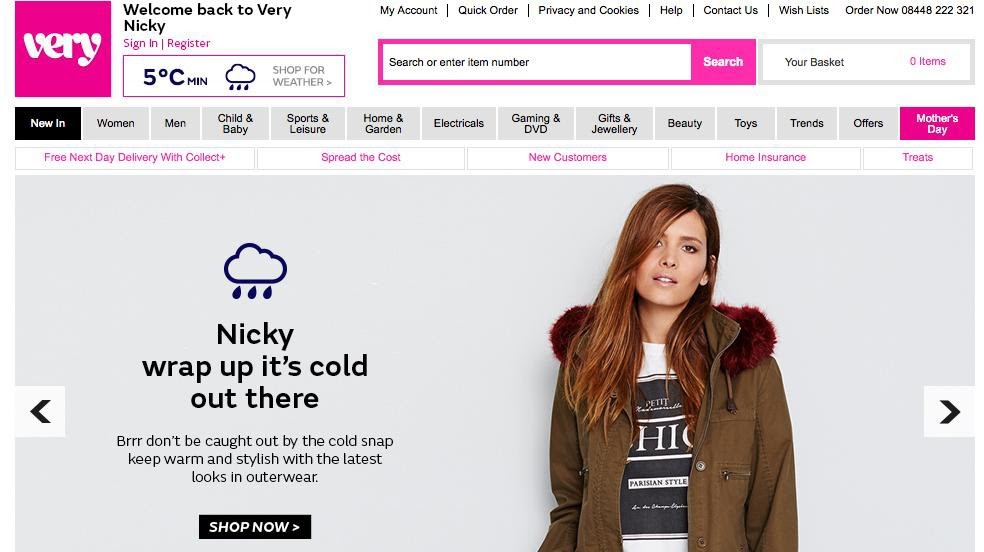
Consider including web notifications for specific offers for holidays like Christmas, Halloween, and seasons like autumn, winter, autumn, and summer on your website.
If you sign up on Adoric, you can create custom popups, floating bars, or slide-ins to display these notifications on your website. It’ll also increase the chances of getting your customers to respond to them.
Don’t forget that you will not be able to show the same season-specific offer to everyone because of varying climates and cultures. Therefore, to avoid showing unnecessary ads to your audience, segment your customers properly before implementing this form of website personalization.
2. Give Intelligent Product Recommendations
Not everyone comes to an eCommerce website to buy one specific item. Some people want to browse through first. This is where product recommendations come in handy.
Also, a customer may get a search result that isn’t exactly what they want. By recommending similar products, they just might find something that suits their preferences.
Product recommendations don’t have to be limited to basic forms like product suggestions. There are smarter forms of product recommendation that can multiply your sales. Ecommerce giant, Amazon, has harnessed these forms of product recommendation to pull in 35% of their sales.
They are:
- Frequently bought together
- New arrivals
- Bestsellers
- Upsell recommendations
- Previously viewed
Recommendation engines work with customer data to make these suggestions. Therefore, you should collect the appropriate data for effective product recommendations.
3. Allow Product Customization
Like we mentioned earlier, apparel brands like Nike allow their customers to customize clothing to different colors, fabrics, and shapes using online templates.

This allows shoppers to produce their own styles and puts them in control of their buying experience.
Thankfully, there are other intuitive, simple ways to infuse customization into your customers’ shopping experience.
You can allow your customers to dictate how they interact with your brand, especially when it comes to marketing content. For example, you can allow your customers to choose what kind of offers you send to their email addresses and how often they get them.
People like this and it’s a sure way to keep them coming back.
3. Target Customers by Location
It’s quite easy to know where your customers are located. Simply use tracking cookies on your website to get your visitors’ location information. You can also ask them directly.
Instead of using this information for just shipping, you can also use it to create more specific content for your customers.
Nordstrom, for example, uses its visitors’ location to suggest trending items near them as shown below.
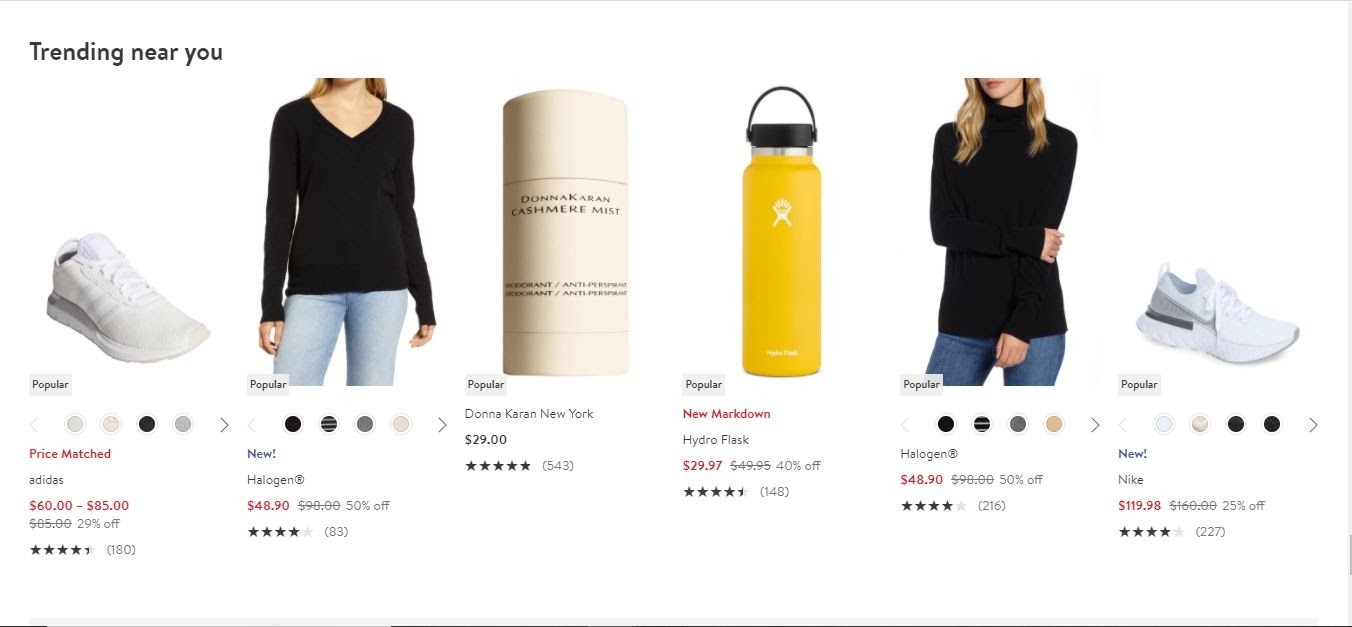
4. Send Personalized Emails Based on Browsing Behavior
A study by Experian Marketing Services proves that personalizing emails leads to better results in email marketing. So, there’s no reason to ignore this example. Your customers expect personalized emails from you anyway.
Set up your eCommerce website such that certain actions trigger a type of personalized email. For example, when your customer begins the checkout process and doesn’t complete it, send them an email reminding them that they have items in their cart.
Give Returning Customers a Continued Shopping Experience
Allowing your customers to continue shopping from where they left off just might reduce cart abandonment.

With this personalization approach, you can remind your visitors of previously selected products and preferences immediately they land on your website based on their browsing history.
It’s a more complex level of personalization but one that will give you great results.
Tips for Personalizing an Ecommerce Website
Now that you have some ideas for personalizing your website, you’ll need to deploy them effectively for them to work. Here are 5 tips that will help.
1. Use Popups
Even though people think popups are annoying, it’s still widely used in marketing. Have you ever wondered why? Popups work remarkably well on eCommerce sites.
Here’s an example of a popup that is personalized for a first time visitor to an eCommerce website.
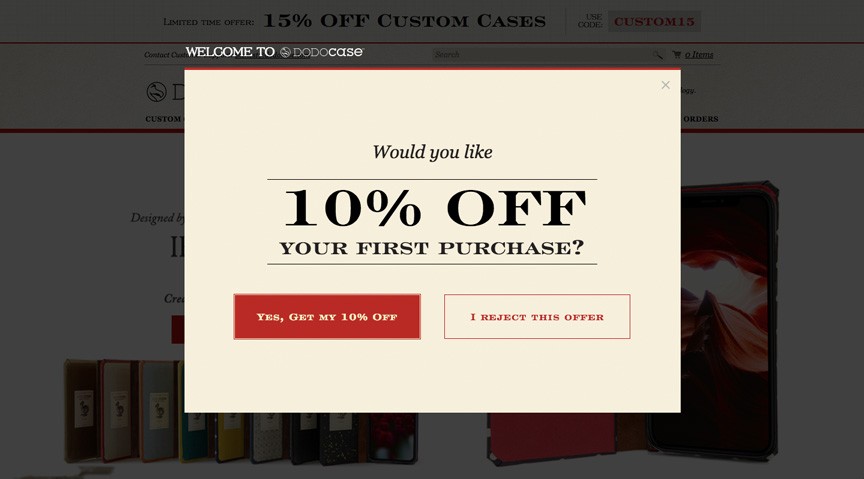
With a popup, customers see your messages immediately and are more likely to act on them. Use popups to display relevant messages to your customers to increase your chances of conversions.
2. Create Quizzes and Surveys
Many eCommerce brands use quizzes or customer surveys to collect information about their customers. Information gotten from customers through this means is usually accurate and you can use it to create a personalized shopping experience for them.
It is also an affordable way to collect visitors’ information if you cannot afford pricey software that extracts high levels of customer information.
If you decide to use this tip, consider including a skip button to give your visitors some freedom to skip questions they don’t want to answer. Also, don’t introduce a survey or quiz right after your visitor lands on your website. Give them some time to get familiar with your brand.
Below is a typical example of a quiz by Brooklyn Bicycle co. that helps them learn about their customers’ interests and needs.
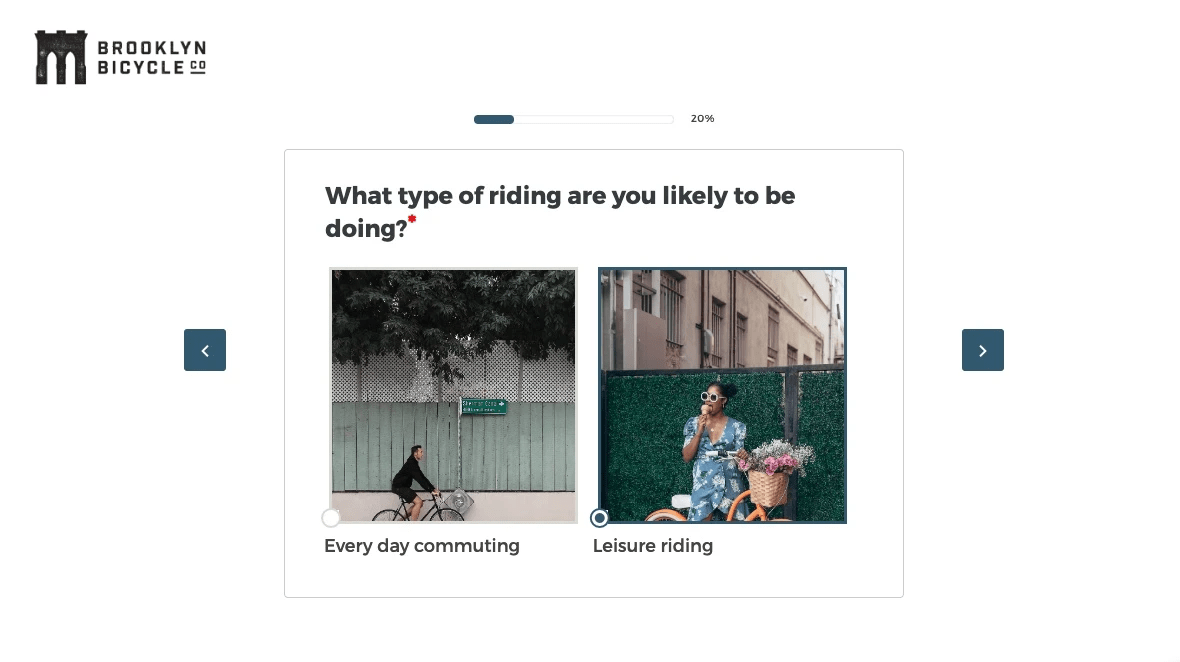
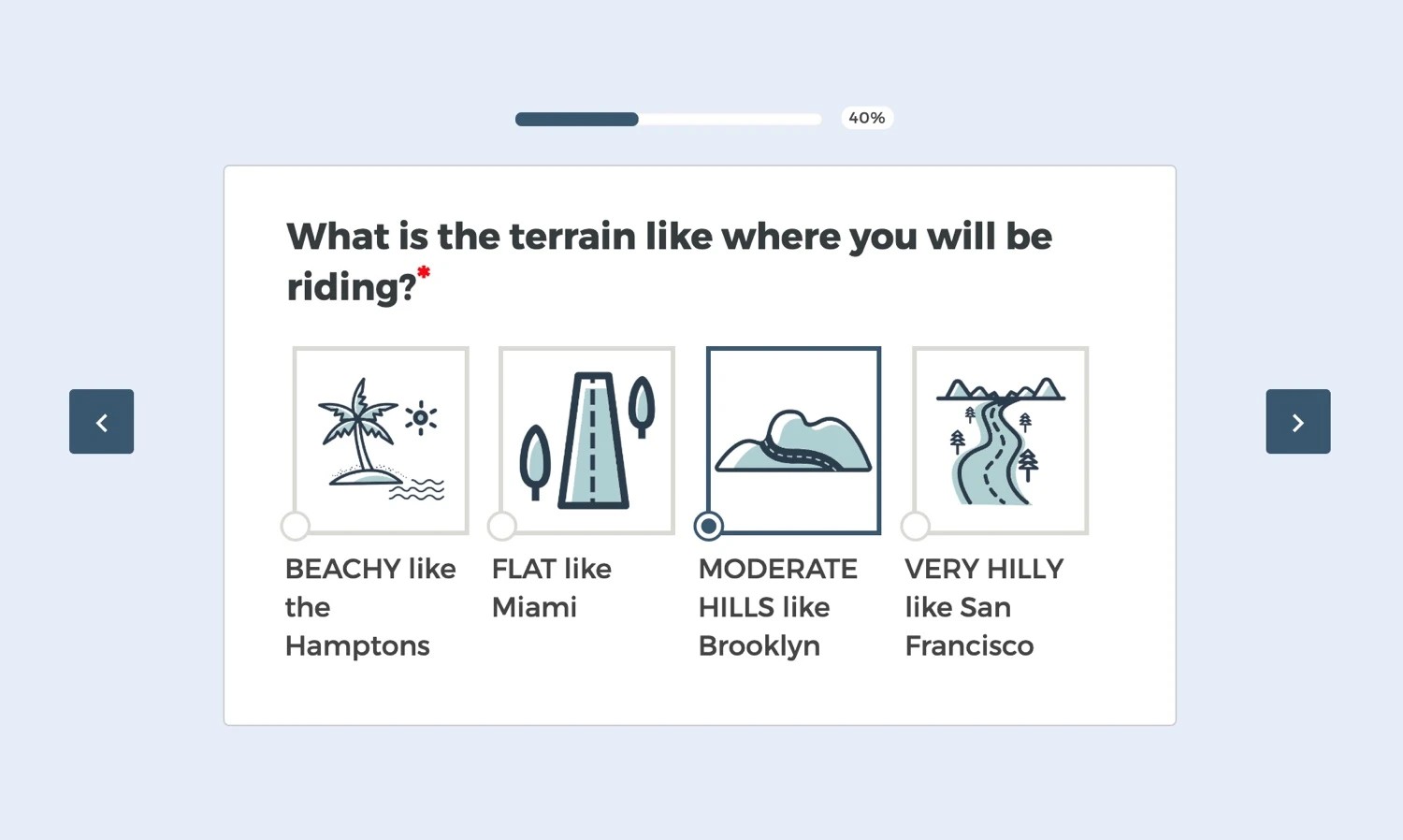
Including an incentive- like a discount- for taking a quiz or filling out a survey is an even smarter way to ensure that you get many responses.
3. Personalize Your Homepage
In some cases, your homepage is the first page your customer sees when they land on your website. So, what better place to start personalizing their experience?
You can set up your homepage to display custom content based on where your visitors are coming from. This means that a visitor from social media will see different content from one who clicked on a link in an email you sent.
It doesn’t end there. You can also personalize your homepage based on your visitors’ location, time zone, or weather conditions.
4. Adopt Retargeting
Have you ever thought an ad was “following you” all over the internet after interacting with a related product or service? This is known as retargeting.
Retarget marketing allows you to show your visitors personalized content even after they’ve left your website. It’s also an effective way to remind your customers to make a purchase or take other action.
5. Improve Segmentation
Every visitor interacts with your business differently. How do you make sure that they achieve their goals on your website despite their different ways of interacting with it? Segmentation helps you do this.
For example, for visitors from locations with a tropical climate, you could display summer deals.
You can segment your customers using as many factors as you like. Some of these factors could be age, location, occupation, income, and so on. This way, you’d be optimizing your personalization and setting your brand up for a good relationship with your customers.
Tools for Ecommerce Personalization
After learning about eCommerce personalization, practical examples you can put to use, and tips for implementing them, there’s one more thing you need to launch into personalizing your eCommerce brand. You need an eCommerce personalization tool.
This could be a software or online tool that allows you to build different forms of personalization into your eCommerce brand. We’ve collected 6 of the best ones for you to choose from.
1. Adoric
Adoric allows you to create personalized web messages for your visitors. With a product recommendation engine that is easy to set up, it offers a great way to reduce cart abandonment, boost user engagement, and drive more sales.
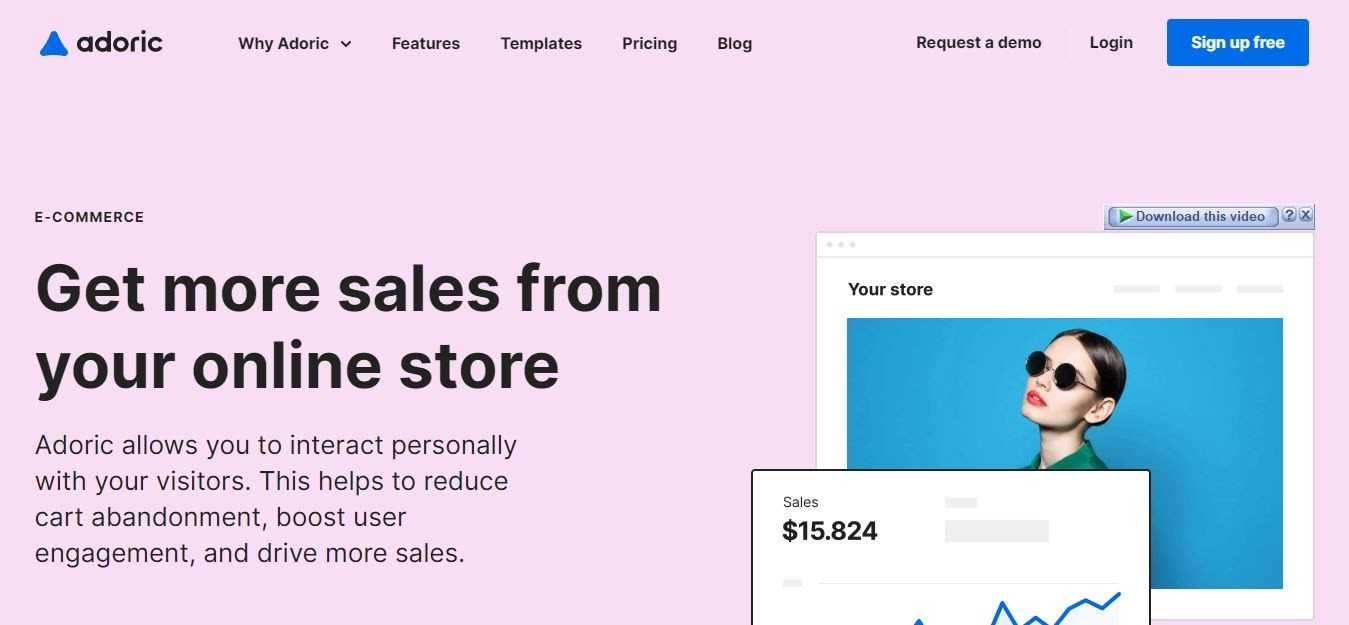
2. Web Engage
Web Engage uses profile data from surveys and feedback to create personalized push notifications that prompt a website visitor to take an action.
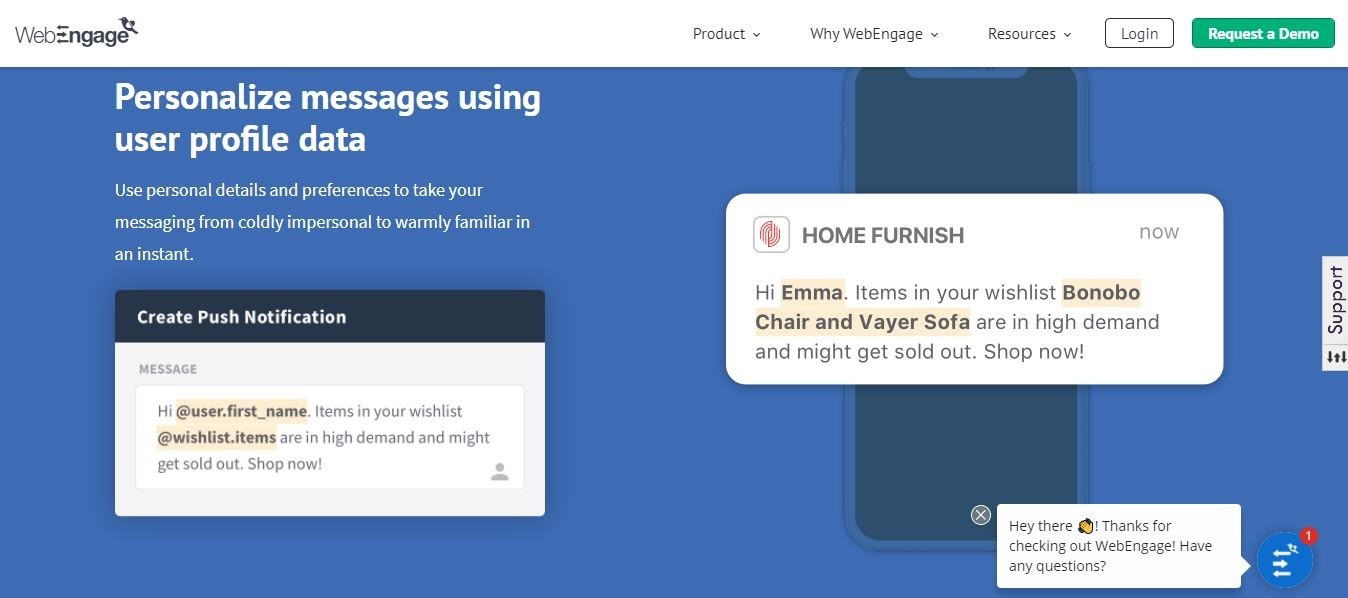
3. Granify
Granify uses machine learning to collect customer data for creating personalized web experiences.
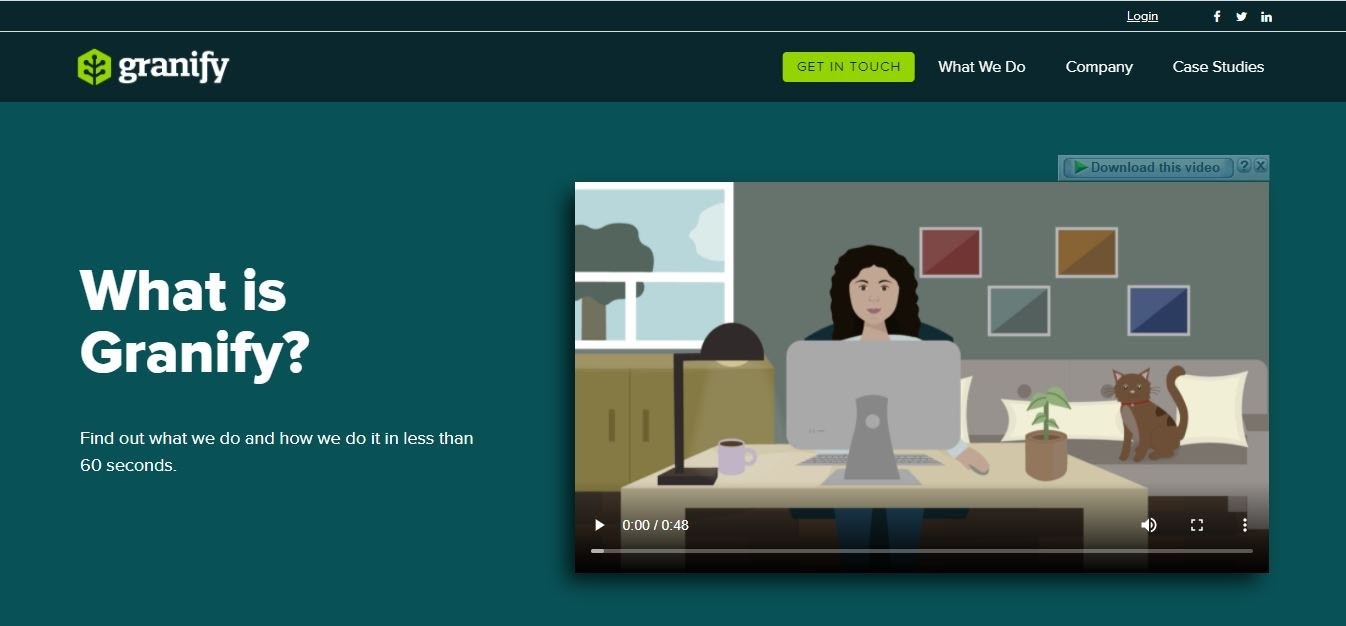
4. Monetate
Monetate allows you to create unlimited segments and helps you deliver personalized experiences to your customers using their browsing behavior, age, or location.
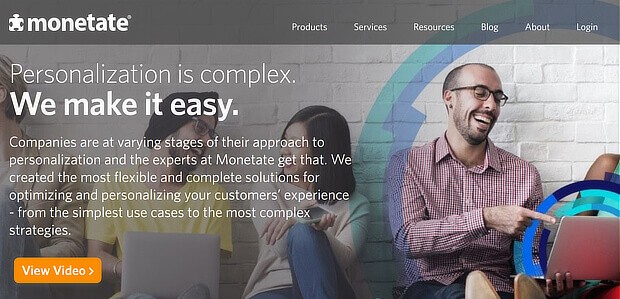
5. Dynamic Yield
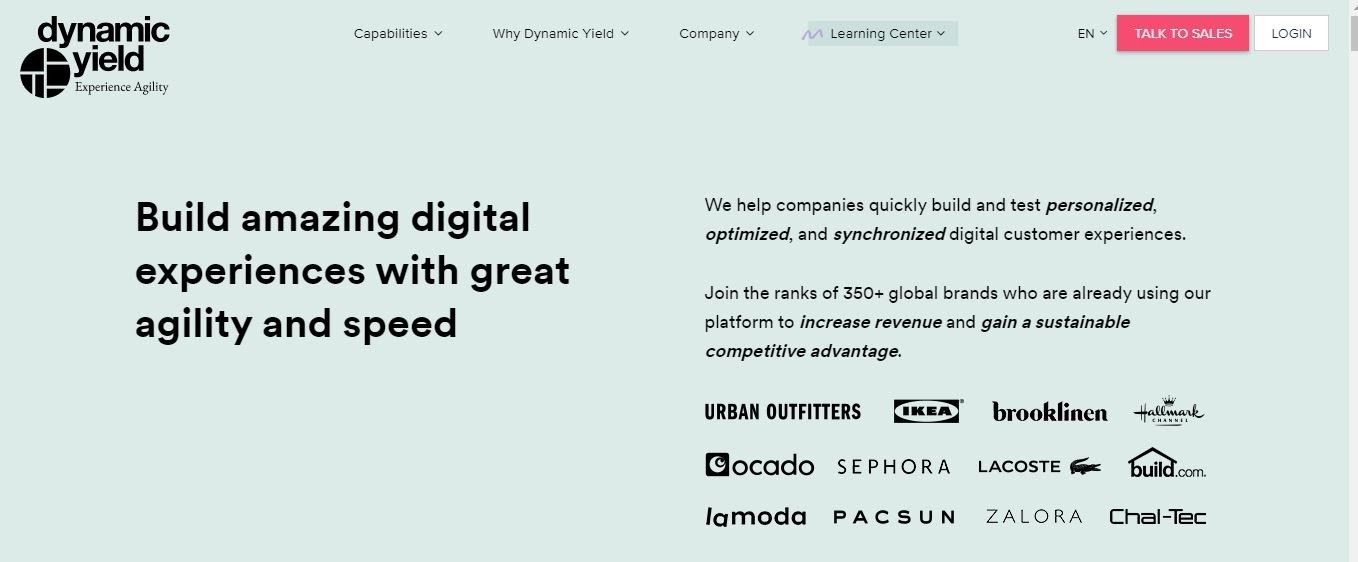
Dynamic yield offers personalization, recommendations, web messaging, A/B testing, in one stack. It helps you to give your visitors a personalized experience with information collected in real-time.
6. Yusp
Yusp uses machine learning methods to create a user journey that maximizes conversion for eCommerce brands.
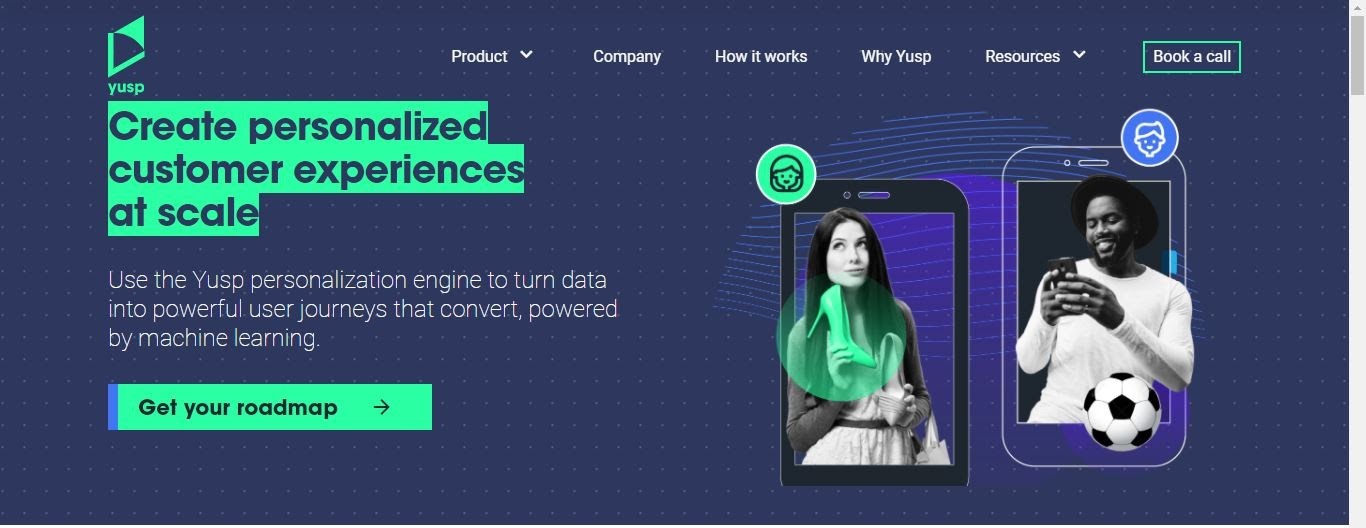
Conclusion
Don’t stop at making sure your customers are familiar with your brand. Go the extra mile to know them. Personalization is how you show your customers that you understand them.
It’s a very rewarding strategy as it improves customer experience and engagement on your website, increases average order value, improves customer loyalty, differentiates you from the competition, and gives you access to useful customer data.
A good eCommerce tool leads to great eCommerce personalization. Sign up on Adoric for free today to start harnessing all it has to offer to help you personalize your eCommerce brand with ease.
If you found this article helpful, do not hesitate to share it with your network.


